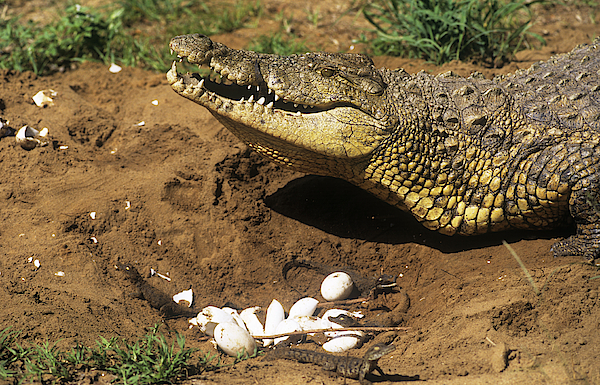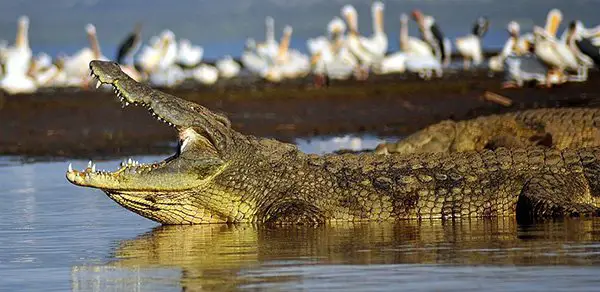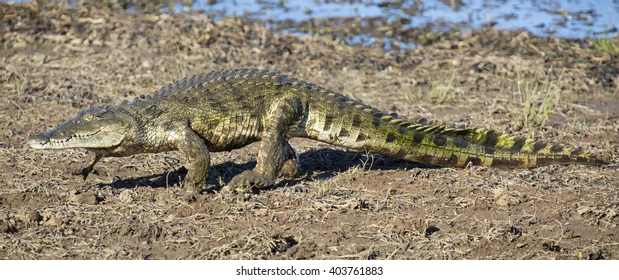Nile Crocodile Nesting Sites A Crucial Component of Their Survival
Nile Crocodile Nesting Sites A Crucial Component of Their Survival The Nile crocodile (Crocodylus niloticus), one of Africa’s most iconic apex predators, plays a vital role in the ecosystems where it resides. Among the key aspects of their lifecycle is the process of nesting, which not only ensures the continuation of the species but also offers insight into their behavior and interactions with the environment. Understanding the nesting sites of Nile crocodiles is essential for both conservationists and those living near crocodile habitats, as these areas are critical for the survival of hatchlings and the broader ecosystem.
Characteristics of Nile Crocodile Nesting Sites

Nile crocodiles typically choose nesting locations near bodies of water such as rivers, lakes, and wetlands. The proximity to water is essential, not only for the female crocodile’s easy access but also for the hatchlings, which must quickly reach the safety of the water after hatching.
Here’s a table summarizing key aspects of Nile crocodile nesting sites:
| Aspect | Description |
|---|---|
| Preferred Habitat | Rivers, lakes, wetlands |
| Nesting Location Factors | Proximity to water, elevation above waterline, substrate type (sand, mud, vegetation) |
| Temperature and Humidity | Temperature affects sex determination; humidity critical for egg survival |
| Nest Construction | Female digs hole (20-30 cm deep), lays 50-60 eggs, covers with soil or vegetation |
| Incubation Period | 70-100 days, dependent on environmental conditions |
| Natural Predators | Monitor lizards, birds, hyenas, other crocodiles |
| Environmental Threats | Flooding, habitat destruction, climate change |
| Human Impact | Habitat encroachment, poaching, water management altering nesting habitats |
| Parental Care | Female guards the nest and helps hatchlings reach water |
| Hatching Success Factors | Temperature, moisture levels, predation levels |
| Post-Hatching Survival | High mortality due to predators (fish, birds, carnivores); few hatchlings survive to adulthood |
| Conservation Measures | Protected areas, anti-poaching efforts, habitat restoration, community education |
| Climate Change Effects | Rising temperatures affecting nest temperatures, imbalanced sex ratios, unpredictable flooding |
| Case Study: Murchison Falls | Successful conservation efforts in Uganda have increased Nile crocodile populations through habitat protection |
| Case Study: Nile River Conflicts | Human-crocodile conflicts due to habitat encroachment in densely populated areas |
Key factors influencing nest site selection include elevation and substrate. Nests are often found on elevated patches of land to avoid flooding during the rainy season, ensuring the eggs remain dry throughout incubation. Additionally, Nile crocodiles prefer sandy or muddy substrates for their nests. Sandy areas allow for easier digging and help maintain a stable temperature within the nest. Temperature regulation is crucial since it directly affects the development of the eggs and determines the sex of the hatchlings. Warmer nest temperatures often produce males, while cooler temperatures lead to female hatchlings. High humidity levels are also important for the survival of the eggs, as overly dry conditions can reduce hatching success.
Nesting Process and Behavior

The process of nest building begins with the female crocodile, who carefully selects a site based on a range of factors, including the safety from predators and environmental conditions. After identifying a suitable location, the female crocodile digs a hole—typically about 20 to 30 centimeters deep—using her hind legs. She lays between 50 to 60 eggs per clutch, which are then carefully covered with soil or vegetation to protect them from external threats.
The eggs are left to incubate for about 70 to 100 days, with the temperature of the nest playing a key role in their development. During this period, the female may guard the nest to ward off predators, though the extent of this protective behavior varies across populations.
Predation and Threats to Nesting Sites

Nile crocodile nests are vulnerable to a variety of natural predators. Monitor lizards, birds of prey, hyenas, and even other crocodiles are known to prey on crocodile eggs. Despite the protective measures taken by the female crocodile, many nests fall victim to these predators, leading to lower hatching success in some areas.
In addition to natural predators, environmental threats such as flooding pose significant risks to nesting sites. Heavy rains or human-altered water management practices can flood nests, suffocating the eggs or washing them away. Human activity also poses a serious threat to nesting sites, with habitat destruction, poaching, and encroachment on crocodile habitats disrupting the natural breeding cycles of these reptiles.
Nesting Success and Hatchling Survival
While many nests face challenges, some eggs successfully hatch after the incubation period. Hatching rates are influenced by various factors, including temperature, predation, and humidity. After hatching, the young crocodiles emit high-pitched sounds to alert the mother. In response, the female helps excavate the nest and carries the hatchlings to the water in her mouth, a rare display of parental care among reptiles.

However, the survival of hatchlings remains perilous even after they reach the water. Predators like fish, birds, and other carnivores continue to threaten their survival, and only a small fraction of the hatchlings will make it to adulthood.
Conservation of Nile Crocodile Nesting Sites
To protect Nile crocodiles and their nesting sites, conservation efforts have been implemented across Africa. Protected areas, such as national parks and wildlife reserves, play a critical role in safeguarding nesting grounds from human encroachment. These protected zones offer a safe space where crocodiles can nest undisturbed by human activity or habitat destruction.
Community engagement is also a key strategy in conservation. Educating local populations about the importance of crocodiles and their role in the ecosystem helps reduce human-crocodile conflicts. Anti-poaching efforts, stricter regulations, and habitat restoration initiatives further support the survival of these majestic reptiles.
Climate change, however, poses a new challenge. As temperatures rise and weather patterns become more unpredictable, the environmental conditions required for successful nesting and egg incubation are at risk. For instance, extreme heat can lead to imbalanced sex ratios in hatchlings, which can have long-term effects on population dynamics.
Case Studies
One successful conservation project in East Africa can be found in Murchison Falls National Park in Uganda, where local efforts to protect Nile crocodile nesting sites have helped increase the population. Through anti-poaching initiatives, habitat restoration, and tourism revenue, this region has become a haven for Nile crocodile reproduction.
On the other hand, in more densely populated regions along the Nile River, human-wildlife conflict is a pressing issue. Here, crocodiles are often seen as a threat to local communities, especially when nesting sites are close to human settlements. Balancing the needs of local populations with crocodile conservation remains a challenging but essential task.
Conclusion
Nile crocodile nesting sites are vital not only for the survival of this species but also for the overall health of their ecosystems. Understanding and protecting these nesting behaviors and locations is crucial for long-term conservation efforts. With ongoing threats from predators, environmental changes, and human activities, safeguarding these nesting sites requires both local and global commitment. By supporting conservation initiatives and fostering coexistence between humans and crocodiles, we can help ensure that future generations of Nile crocodiles thrive.
Here are some tips for understanding and supporting Nile crocodile nesting sites:
Tips for Understanding and Supporting Nile Crocodile Nesting Sites
Educate Yourself and Others:
- Learn about the biology and ecology of Nile crocodiles.
- Share information with local communities to promote awareness of their importance in the ecosystem.
Support Conservation Efforts:
- Participate in or donate to local wildlife conservation organizations focused on protecting crocodiles and their habitats.
- Advocate for policies that protect wetlands and river ecosystems.
Respect Protected Areas:
- Avoid disturbing known crocodile nesting sites in national parks and wildlife reserves.
- Follow all regulations and guidelines while visiting these areas to minimize human impact.
Reduce Human-Crocodile Conflicts:
- Implement measures to keep livestock and pets away from known nesting areas.
- Use fencing or other barriers to protect domestic animals from crocodile predation.
Report Illegal Activities:
- Notify authorities about poaching or illegal harvesting of crocodiles and their eggs.
- Be vigilant in protecting nesting sites from human encroachment and habitat destruction.
Practice Responsible Tourism:
- Choose eco-friendly tour operators that promote sustainable practices and support local conservation initiatives.
- Participate in guided tours that educate visitors about crocodile conservation and nesting behaviors.
Promote Habitat Restoration:
- Engage in or support local habitat restoration projects to improve the health of wetland ecosystems.
- Participate in tree-planting initiatives or efforts to restore native vegetation near waterways.
Stay Informed About Climate Change:
- Keep abreast of research on how climate change affects crocodile nesting and habitats.
- Support initiatives aimed at mitigating climate change impacts in vulnerable ecosystems.
Encourage Local Involvement:
- Foster community-based conservation efforts that involve local people in protecting crocodile nesting sites.
- Promote sustainable livelihoods that reduce reliance on habitat destruction.
Observe from a Distance:
- If you encounter nesting sites in the wild, observe from a safe distance to avoid disturbing the crocodiles.
- Use binoculars or cameras with zoom lenses to minimize intrusion.
FAQs About Nile Crocodile Nesting Sites
Where do Nile crocodiles typically nest?
Nile crocodiles prefer to nest near bodies of water such as rivers, lakes, and wetlands. They select elevated areas to avoid flooding and ensure the eggs remain dry during incubation.
How do Nile crocodiles choose nesting sites?
Female Nile crocodiles evaluate several factors when selecting nesting sites, including proximity to water, safety from predators, substrate type (sand or mud), and environmental conditions such as temperature and humidity.
How many eggs do Nile crocodiles lay in a single clutch?
A female Nile crocodile typically lays between 50 to 60 eggs per clutch. The exact number can vary based on factors like the female’s size and health.
How long does it take for Nile crocodile eggs to hatch?
The incubation period for Nile crocodile eggs is approximately 70 to 100 days, depending on environmental conditions such as temperature and humidity.
What determines the sex of Nile crocodile hatchlings?
The temperature of the nest during incubation plays a crucial role in determining the sex of the hatchlings. Generally, warmer temperatures tend to produce male crocodiles, while cooler temperatures lead to female hatchlings.
What threats do Nile crocodile nests face?
Nesting sites are vulnerable to predation by natural predators such as monitor lizards, birds, and hyenas. Environmental threats include flooding, habitat destruction, and climate change. Human activities, like poaching and habitat encroachment, also pose significant risks.
Do female Nile crocodiles care for their young after hatching?
Yes, female Nile crocodiles exhibit parental care by guarding the nest and assisting hatchlings in reaching the water after they emerge from their eggs.
What conservation efforts are in place to protect Nile crocodile nesting sites?
Conservation efforts include establishing protected areas, anti-poaching initiatives, habitat restoration projects, and community engagement programs to raise awareness about the importance of crocodiles and their habitats.
How can local communities contribute to the conservation of Nile crocodiles?
Local communities can engage in conservation efforts by participating in habitat restoration projects, educating themselves and others about crocodile biology, reporting illegal activities, and practicing sustainable land use to reduce human-crocodile conflicts.
What should I do if I encounter a crocodile near a nesting site?
If you encounter a crocodile near a nesting site, keep a safe distance and observe from afar. Do not approach the nest or attempt to disturb the crocodile, as this can be dangerous for both you and the animal.
